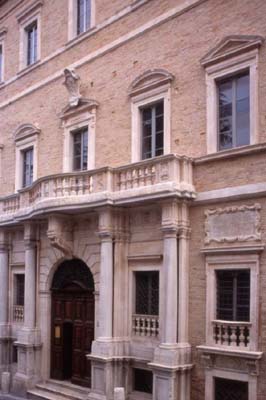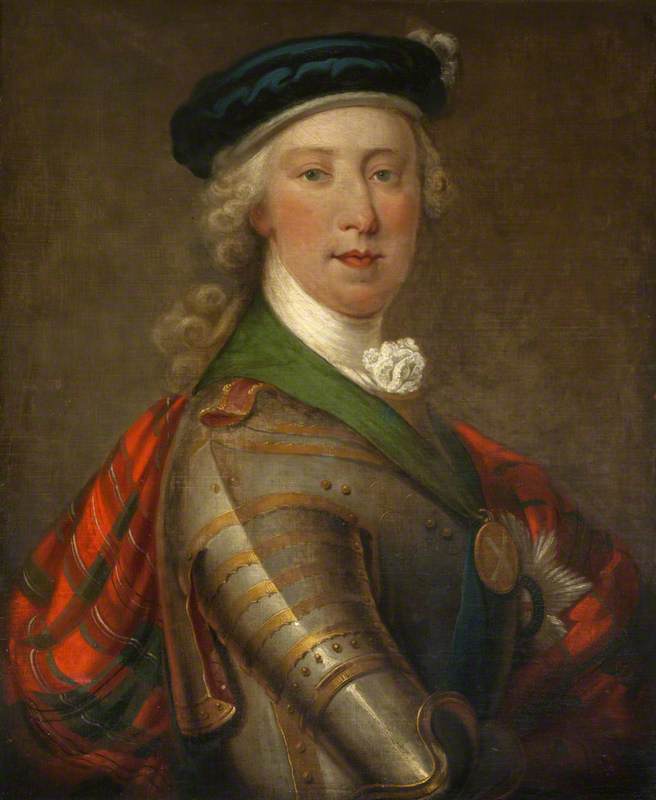|
Palazzo Compagnoni Marefoschi, Macerata
The Palazzo Compagnoni Marefoschi is a Baroque architecture, Baroque-style aristocratic urban palace located on Via don Minzoni 11 in the center Macerata, region of the Marche, Italy. It rises diagonal to the Palazzo Buonaccorsi. History Documents recall that the Compagnoni family by 1138 were inhabiting this site. By 1211, they had extended their holdings in this quarter of the city. The various buildings at this site were built over various centuries. In 1736, the branch of the family Compagnoni delle Lune built their own palace, commissioned from the architect Francesco Vici. A few decades later, the Compagnoni Marefoschi (arising from the Compagnoni delle Stelle) erected this present adjacent palace in the 18th-century. From 1755 to 1771, the brothers Mario and Camillo Compagnoni Marefoschi, commissioned from Luigi Vanvitelli a major refurbishment, leading to the late-baroque or Rococo facade we see presently. Along the entrance stairway are numerous ancient Roman inscription ... [...More Info...] [...Related Items...] OR: [Wikipedia] [Google] [Baidu] |
Baroque Architecture
Baroque architecture is a highly decorative and theatrical style which appeared in Italy in the late 16th century and gradually spread across Europe. It was originally introduced by the Catholic Church, particularly by the Jesuits, as a means to combat the Reformation and the Protestantism, Protestant church with a new architecture that inspired surprise and awe. It reached its peak in the High Baroque (1625–1675), when it was used in churches and palaces in Italy, Spain, Portugal, France, Bavaria and Austria. In the Late Baroque period (1675–1750), it reached as far as Russia, the Ottoman Baroque architecture, Ottoman Empire and the Spanish colonization of the Americas, Spanish and Portuguese colonization of the Americas, Portuguese colonies in Latin America. In about 1730, an even more elaborately decorative variant called Rococo appeared and flourished in Central Europe. Baroque architects took the basic elements of Renaissance architecture, including domes and colonnades, ... [...More Info...] [...Related Items...] OR: [Wikipedia] [Google] [Baidu] |
Macerata
Macerata () is a city and ''comune'' in central Italy, the county seat of the province of Macerata in the Marche region. It has a population of about 41,564. History The historical city centre is on a hill between the Chienti and Potenza (river), Potenza rivers. It first consisted of the Picentes, Picenes city named Ricina (''Helvia Recina''), then, after its romanization, Recina and Helvia Recina. After the destruction of Helvia Recina by the barbarians, the inhabitants took shelter in the hills and eventually began to rebuild the city, first on the top of the hills, before descending again later and expanding. The newly rebuilt town was Macerata. It became a municipality (or comune in Italian) in August 1138. 20th century The ''comune'' of Macerata was the location of an internment camp for Jews and refugees, and a prisoner-of-war camp (PG53, at Sforzacosta) during World War II. 21st century According to Jason Horowitz of ''The New York Times'', Macerata was initially welco ... [...More Info...] [...Related Items...] OR: [Wikipedia] [Google] [Baidu] |
Palazzo Buonaccorsi
The Palazzo Buonaccorsi is an 18th-century aristocratic palace, now the civic museum of the town, located on Via Don Minzoni 24 in the historic center of Macerata, region of Marche, Italy. Description The palace was erected on a site with some houses just inside the former medieval city walls. The Buonaccorsi family, led by Simone the Elder had risen to prominence by the mid-17th century; Simone's brother Buonaccorso (1620-1678) had become a cardinal. Simone endeavored to build a palace here, commensurate with the family's rising status. After the Simone's death in 1708, his son Raimondo continued the project, aided by his brother Filippo, Abbot of San Quirico, and employing the designs of the architects Giovanni Battista Contini and Ludovico Gregorini. The palace encompassed the former Palazzo Centini and other houses at the site. Raimondo's son, also called Simone (1708-1776) would also become a cardinal. After the death of Raimondi in 1746, the family was elevated in to the ... [...More Info...] [...Related Items...] OR: [Wikipedia] [Google] [Baidu] |
Francesco Vici
Francesco, the Italian (and original) version of the personal name "Francis", is one of the most common given name among males in Italy. Notable persons with that name include: People with the given name Francesco * Francesco I (other), several people * Francesco Barbaro (other), several people * Francesco Bernardi (other), several people *Francesco di Giorgio Martini (1439-1501), Italian architect, engineer and painter *Francesco Zurolo (first half of the 15th century–1480), Italian feudal lord, baron and italian leader * Francesco Berni (1497–1536), Italian writer * Francesco Canova da Milano (1497–1543), Italian lutenist and composer * Francesco Primaticcio (1504–1570), Italian painter, architect, and sculptor * Francesco Albani (1578–1660), Italian painter * Francesco Borromini (1599–1667), Swiss sculptor and architect * Francesco Cavalli (1602–1676), Italian composer * Francesco Maria Grimaldi (1618–1663), Italian mathematician and ... [...More Info...] [...Related Items...] OR: [Wikipedia] [Google] [Baidu] |
Luigi Vanvitelli
Luigi Vanvitelli (; 12 May 1700 – 1 March 1773), known in Dutch as (), was an Italian architect and painter. The most prominent 18th-century architect of Italy, he practised a sober classicising academic Late Baroque style that made an easy transition to Neoclassicism. Biography Early years and education Vanvitelli was born in Naples, the son of an Italian woman, Anna Lorenzani, and a Dutch painter of land and cityscapes (''veduta''), Caspar van Wittel, who also used the name Vanvitelli. Luigi began his career as a history painter, and from 1724 he was employed as a copyist in the fabbrica of St Peter’s in Rome. The extent of his academic training is not clear, but under Antonio Valeri (1648–1736), who succeeded Carlo Fontana as architetto soprastante, Vanvitelli discovered his talent as an architect. Ultimately, however, Valeri was a less significant influence on his work than Fontana or Filippo Juvarra. His first patron was the prefect Cardinal Annibale Albani. A ... [...More Info...] [...Related Items...] OR: [Wikipedia] [Google] [Baidu] |
Rococo
Rococo, less commonly Roccoco ( , ; or ), also known as Late Baroque, is an exceptionally ornamental and dramatic style of architecture, art and decoration which combines asymmetry, scrolling curves, gilding, white and pastel colours, sculpted moulding, and ''trompe-l'œil'' frescoes to create surprise and the illusion of motion and drama. It is often described as the final expression of the Baroque movement. The Rococo style began in France in the 1730s as a reaction against the more formal and geometric Louis XIV style. It was known as the "style Rocaille", or "Rocaille style". It soon spread to other parts of Europe, particularly northern Italy, Austria, southern Germany, Central Europe and Russia. It also came to influence other arts, particularly sculpture, furniture, silverware, glassware, painting, music, theatre, and literature. Although originally a secular style primarily used for interiors of private residences, the Rococo had a spiritual aspect to it which led to ... [...More Info...] [...Related Items...] OR: [Wikipedia] [Google] [Baidu] |
Hadrian's Villa
Hadrian's Villa (; ) is a UNESCO World Heritage Site comprising the ruins and archaeological remains of a large Roman villa, villa complex built around AD 120 by Roman emperor Hadrian near Tivoli, Italy, Tivoli outside Rome. It is the most imposing and complex Roman villa known. The complex contains over 30 monumental and scenic buildings arranged on a series of artificial esplanades at different heights and surrounded by gardens decorated with water basins and nymphaea (fountains). The whole complex covers an area of at least a square kilometre, an area larger than the city of Pompeii. In addition to the villa's impressive layout, many of the buildings are considered masterpieces of Roman architecture, making use of striking curved shapes enabled by extensive use of concrete. They were ingenious for the complex symmetry of their ground plans and are considered unrivalled until the arrival of Baroque architecture in the 17th century, initiated by Borromini, who used Hadrian's Vill ... [...More Info...] [...Related Items...] OR: [Wikipedia] [Google] [Baidu] |
Mario Compagnoni Marefoschi
Mario Compagnoni Marefoschi (10 September 1714 – 23 December 1780) was a cardinal of the Roman Catholic Church. He was born in the Palazzo Compagnoni Marefoschi in Macerata, Italy. Pope Clement XIV made him a cardinal ''in pectore'' on 29 January 1770 and announced he had done so on 10 September 1770. He was assigned the titular church of Sant'Agostino on 12 December 1770. He was appointed Prefect of the Sacred Congregation of Rites and Archpriest of the Basilica of St. John Lateran in 1771 and held both posts until his death. He participated in the papal conclave of 1774-1775 that elected Pope Pius VI Pope Pius VI (; born Count Angelo Onofrio Melchiorre Natale Giovanni Antonio called Giovanni Angelo or Giannangelo Braschi, 25 December 171729 August 1799) was head of the Catholic Church and ruler of the Papal States from 15 February 1775 to hi .... Cardinal Prospero Marefoschi was his uncle. Notes External links * 1714 births 1780 deaths People from Macer ... [...More Info...] [...Related Items...] OR: [Wikipedia] [Google] [Baidu] |
Louise Of Stolberg-Gedern
Princess Louise Maximiliane Caroline Emanuel of Stolberg-Gedern (20 September 1752 – 29 January 1824) was the wife of Charles Edward Stuart, the Jacobite claimant to the English and Scottish thrones. The unhappy marriage led her to request from the pope a decree of separation, which she was granted. During her years in Paris and Florence, she established famous salons where important artists and intellectuals of the day were invited to gather. She is commonly called the Countess of Albany. Early life Louise was born in Mons, Hainaut, in the Austrian Netherlands (now Belgium). She was the eldest daughter of Prince Gustav Adolf of Stolberg-Gedern and his wife, Princess Elisabeth of Hornes, the younger daughter of Maximilian, Prince of Hornes. She had three sisters. When she was only four years old, her father was killed at the Battle of Leuthen. His death left the family in much reduced financial circumstances. When she was seven, she was sent to be educated at the school ... [...More Info...] [...Related Items...] OR: [Wikipedia] [Google] [Baidu] |
Charles Edward Stuart
Charles Edward Louis John Sylvester Maria Casimir Stuart (31 December 1720 – 30 January 1788) was the elder son of James Francis Edward Stuart, making him the grandson of James VII and II, and the Stuart claimant to the thrones of England, Scotland, and Ireland from 1766 as Charles III. During his lifetime, he was also known as "the Young Pretender" and "the Young Chevalier"; in popular memory, he is known as Bonnie Prince Charlie. Born in Rome to the exiled Stuart court, he spent much of his early and later life in Italy. In 1744, he travelled to France to take part in a planned invasion to restore the Stuart monarchy under his father. When storms partly wrecked the French fleet, Charles resolved to proceed to Scotland following discussion with leading Jacobites. This resulted in Charles landing by ship on the west coast of Scotland, leading to the Jacobite rising of 1745. The Jacobite forces under Charles initially achieved several victories in the field, including the Ba ... [...More Info...] [...Related Items...] OR: [Wikipedia] [Google] [Baidu] |
Cappella Privata Palazzo Compagnoni
Cappella may refer to: * Cappella (band), Italian electronic music group * a cappella, unaccompanied singing People with the surname * Felix Cappella (1930–2011), Canadian race walker * Scipione Cappella (fl. 18th century), Italian painter See also * A cappella (other), including "A Cappella" * Capella (other) * Capela (other) Capela may refer to: Places * Capela (Penafiel), a parish in Penafiel Municipality, Portugal * Capela, Sergipe, a municipality in the Brazilian state of Sergipe * Capela, Alagoas, a municipality in the Brazilian state of Alagoas * Capela, Râm ... * '' Kappela'', a 2020 Indian film {{disambiguation, surname ... [...More Info...] [...Related Items...] OR: [Wikipedia] [Google] [Baidu] |






